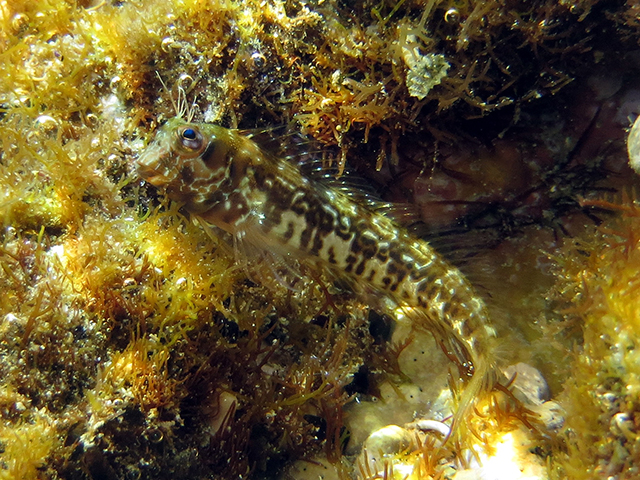| Blenniidae (Combtooth blennies), subfamily: Salariinae |
| 6 cm TL (male/unsexed) |
|
demersal; marine |
| Eastern Central Atlantic: Cape Verde. |
|
Dorsal spines (total): 12-12; Dorsal soft rays (total): 19-20; Anal spines: 2-2; Anal soft rays: 21-22 |
| Adults occur in intertidal areas (Ref. 27000). Oviparous. Eggs are demersal and adhesive (Ref. 205), and are attached to the substrate via a filamentous, adhesive pad or pedestal (Ref. 94114). Larvae are planktonic, often found in shallow, coastal waters (Ref. 94114). |
|
Least Concern (LC); Date assessed: 24 March 2011 Ref. (130435)
|
| harmless |
Source and more info: www.fishbase.org. For personal, classroom, and other internal use only. Not for publication.

